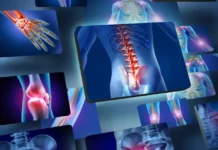 AUSTIN, Texas: Every odd-numbered year, the Texas health and human services commissioner appears before state lawmakers hungry to cut spending on Medicaid, and at every meeting he or she shows them a chart of whose health services would suffer: impoverished children, senior citizens and the disabled.
AUSTIN, Texas: Every odd-numbered year, the Texas health and human services commissioner appears before state lawmakers hungry to cut spending on Medicaid, and at every meeting he or she shows them a chart of whose health services would suffer: impoverished children, senior citizens and the disabled.
That’s the moment when even the most hard-hearted lawmaker realizes that cutting the program, which accounts for a quarter of state spending, will be tougher than they thought. Texas already has one of the most restrictive Medicaid programs in the country.
But Texas faces a fundamental problem in that the number of poor children and impoverished elderly continues to grow, and federal law requires the state to provide a basic level of services to these people in return for matching funds that cover about 60 percent of the program’s cost.
This year lawmakers will try to wring out every dime possible in efficiencies and fighting waste. Sen. Jane Nelson, chair of the Health and Human Services Committee, has introduced bills to fight waste and fraud while rewarding great efficiency.
“These are some of the most vulnerable people we serve. We need to make sure they get the best possible care and that we are delivering services in a way that ensures we can keep caring for them into the future,” Nelson said.
This year the agency’s new commissioner, Kyle Janek, showed the chart to the House Public Health Committee, where five out of 11 lawmakers are new members.
Chairwoman Lois Kolkhorst, R-Brenham, pledged that any proposal must answer two questions, “Does it lower the price of health care and does it improve outcomes?”
Janek explained that Texas does not offer Medicaid coverage to single, childless adults, so the homeless man standing on the street corner doesn’t benefit from the program; other taxes pay for his health care. Medicaid also does not pay for legal or illegal immigrants.
But federal rules require Medicaid to cover citizens who are parents in low-income families, poor children, elders and people with disabilities, Janek explained. In Texas, 83 percent of the nearly 4.2 million people on Medicaid are either children or elderly and 55 percent female.
For a child between 1 and 5 years old to qualify for Medicaid, they must be part of a family that makes less than 133 percent of the federal poverty level, which is $25,975 a year for a family of three. Once they turn 6, the threshold drops to 100 percent, or $19,350 a year.
More than 2.5 million Texas children are enrolled in Medicaid, and an additional 583,000 qualify for the Children’s Health Insurance Program. Because a parent’s health has a direct impact on their children, Medicaid covers 226,000 poor parents who make less than $2,322 a year.
The disabled make up the second largest group receiving Medicaid, and they qualify at 74 percent of the poverty level, or $8,500 a year. More than 418,000 adults qualify and most cannot work, while many require constant care.
All elderly people qualify for Medicare, the federal insurance program often confused with Medicaid that covers senior citizens. However, Medicare doesn’t cover everything and seniors must make co-payments. Medicaid covers those costs when the elderly earn less than $8,500 a year, unless they need a nursing home. Then they qualify if they make less than $25,278 a year. In Texas, that’s about 320,427 people.
More than 93,000 pregnant women who earn less than $21,256 a year qualify for Medicaid until after they give birth. Medicaid pays for 55.9 percent of births in Texas.
Yet while children and pregnant women make up the majority of people on Medicaid, more than half of the money is spent on the elderly in long-term care and the disabled, Janek said. Poor children cost the program $250 per month, poor adults and pregnant women cost about $600, while the aged and disabled average $1,200 a month.
-AP






